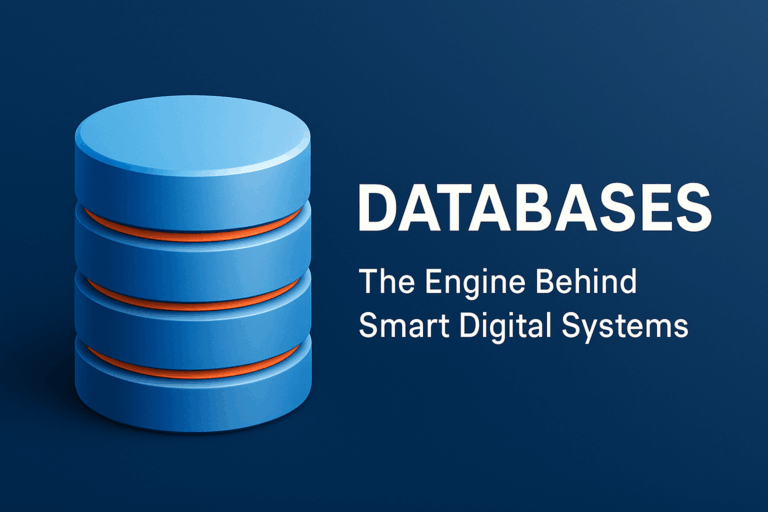Introduction
When we strip the world of its surface noise and examine the hidden structure that governs it, we find that every system, every repetition, every interaction is a pattern a construct that can be represented. A database, then, is not merely a storage container, but a framework through which structured reality becomes retrievable, traceable, and computationally analyzable.
Databases are, in essence, the mathematical language of modern knowledge.
What Is a Database?
A database is not a digital bookshelf. It is a programmable construct a formal function that associates inputs with fields, keys, and entities. These fields are not arbitrary. They obey the laws of structure and logic. The power of a database lies not in its contents, but in its form its ability to store data in ways that respect relations, hierarchies, and integrity.
The database management system (DBMS) governs this process: a computational engine that applies instructions against structure not unlike the conceptual machines that once defined computation itself.
Types of Databases: Different Models for Different Problems
Relational Databases: Built on relational algebra. Tables act as entities, and queries are mathematical expressions defined in SQL. Ideal for administrative, financial, and enterprise systems.
NoSQL (Non-relational): Structure-flexible and designed for irregular or massive datasets such as documents, key value pairs, or graphs.
Time-Series Databases: Focused on data indexed by time. Useful for sensor data, financial systems, and monitoring infrastructures.
Distributed Databases: Built on the principle that knowledge can be processed across multiple independent systems as one might distribute computational logic itself.
Databases as Formal Logic Systems
At their core, databases are mini Turing machines.
You provide an input (a query).
The system interprets it through defined structure.
A deterministic, logically sound result is returned.
A SELECT or JOIN operation is not just a function it is a logically bounded procedure. And the more precise the rules, the more predictable the behavior. Hence, databases are not software they are mathematical instruments simulating structure.
Why Are Databases Necessary?
Because they bring order to data and order is what enables computation.
Because they separate the content from its context, allowing for scalability.
Because they enforce rules that preserve data integrity.
Because they are programmable, measurable, and reproducible.
Data without structure is noise.
Data within a database becomes knowledge.
Choosing the Right Database Model
Just like every mathematical equation needs defined variables, each database type serves specific needs. Ask:
What is the structure of your data?
How large is the dataset?
Do you need fast reads or deep consistency?
Is time a primary key? Are relationships explicit?
The answers determine which system best maps your reality.
Databases and the Rise of Intelligent Systems
Just as cognition requires memory, modern digital systems require databases. Memory in this context is structured storage the source from which decisions emerge.
No algorithm functions in a vacuum. Every AI model learns from data. And every structured response begins with a structured input a database.
Thus, behind every intelligent application is a logic engine. And behind that engine is a database.
Conclusion
Do not think of databases as tools. Think of them as language systems, mathematical engines for expressing truth through structure.
They are not just silent containers. They are logical operators. They are pattern detectors. They are the silent architects of how machines perceive and respond.
Every smart system, every efficient business, every reliable decision begins with a database.





